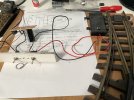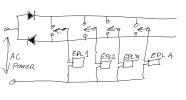Gizzy
A gentleman, a scholar, and a railway modeller....
I've often heard forum folk say that the LGB/Piko boxes for switching electrically operated points are quite expensive.
I have often posted here about a much cheaper alternative from Gaugemaster, but it seems that it is still not known about.
 www.gaugemasterretail.com
www.gaugemasterretail.com
I used these myself when I was an analogue operator. Instructions are provided, and they can be easily fitted inside a suitable enclosure.
I commend these to the forum....
I have often posted here about a much cheaper alternative from Gaugemaster, but it seems that it is still not known about.
Search results for: 'g scale point switch' | Gaugemaster
Default Description
I used these myself when I was an analogue operator. Instructions are provided, and they can be easily fitted inside a suitable enclosure.
I commend these to the forum....



